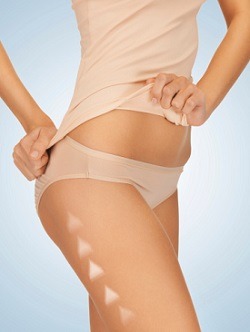
Tips for Your Smoothest Liposuction Recovery
Liposuction is one of the top requested plastic surgeries available in the world of body contouring today. It offers men and women a second chance to have the body they want by removing fat deposits that diet and exercise can’t. Even with today’s medical advancements, some patients still resist liposuction because they fear a long recovery may lie ahead. While enhanced techniques have minimized recovery times, there are even more tactics patients can utilize to ensure a quick and smooth recovery following liposuction surgery.
The Liposuction Surgery
Liposuction involves the removal of stubborn fat deposits from targeted parts of the body by a qualified plastic surgeon. The procedure begins with small incisions placed at the site to be treated. A sterile solution will be injected to reduce trauma and make the process of fat removal easier. Your surgeon will then insert a small, thin cannula into the incisions with a suction device attached. The fat is dislodged using back and forth motions of the cannula, and then pumped out along with any liquids.
Your liposuction surgery may include one or multiple treatment areas, depending on what was discussed during your consultation. Depending on how much fat is removed and how many treatment areas are included, the duration of your surgeon may vary. These factors and other important information about your specific liposuction procedure will be addressed by your surgeon prior to your surgery. If you are combining liposuction with another body contouring surgery, such as a tummy tuck, your recovery time and instructions will also likely change.
Your Recovery Time After Liposuction
After liposuction surgery, most patients experience a relatively short period of recovery and a very low rate of complications. It is normal to have some swelling around the treatment areas, as well as bruising and redness. As the body adapts to the changes and heals from the procedure, most patients also experience some pain and discomfort which can be managed with prescribed medication. The total length of your recovery time will depend largely on how extensive your liposuction was and where it was performed. Once you have determined the treatment areas for your surgery, your surgeon can give a closer estimate of your specific recovery time. Typically, liposuction recovery includes two days of downtime and about one to two weeks of restricted activity and rest. Most strenuous exercises and activities are off limits for at least 10 days, but often longer. Follow your surgeon’s timeline for restrictions and instructions to speed up your post-operative surgery.
Prepare for Your Procedure
As the date of your liposuction procedure approaches, there are several things you can do to prepare yourself and stay healthy enough for surgery. First of all, eat a consistently healthy diet and continue to exercise regularly in order to maintain your current weight. Most doctors will recommend not gaining or losing weight before any body contouring procedure to ensure the results discussed in your consultation are the results you’ll see after surgery. Also, liposuction is never a substitute for weight loss or a way to prevent weight gain in the future, so developing healthy eating and exercising habits before surgery can keep you looking great for even longer, provided you keep it up.
Another way to stay healthy before surgery is to avoid illnesses as much as possible. Wash your hands frequently and stay away from anyone showing obvious signs of illness to prevent catching a cold or flu bug right before your surgery. Some illnesses may require you to delay your procedure, so stay as healthy as possible to stay on schedule. Finally, discuss any smoking habits with your plastic surgeon in order to make a plan to quit before your surgery.
Get Ready to Rest and Recover
Before surgery, find a comfortable spot in your home that can become your Recovery Area, a space dedicated to rest and relaxation where you’ll spend the first critical 48 hours of your recovery. Most patients choose the couch, a comfy recliner, or their bed to set up with pillows, blankets, soft clothes, and other comforts. Use a small basket or box to stock up on supplies, which might include gauze, medications, cold compresses and other medical needs your doctor might suggest. You may need to learn to care for your incision areas and dressings, so be sure to follow your plastic surgeon’s instructions.
Don’t forget to add things to stay entertained, like a new magazine or book, a favorite TV show on your laptop, or a Sudoku book, among other things. Add your favorite healthy snacks and plenty of water bottles to your recovery basket as well, so you can cut down on trips to the kitchen. It’s essential you stay hydrated and well-fed following surgery, so choose the right foods to fuel your recovery and get back on your feet as soon as possible.
A Smooth Recovery Begins With a Smooth Procedure
Choose a reputable board certified plastic surgeon to perform your liposuction procedures in order to minimize your potential risks and maximize your results. To learn more about making your recovery the smoothest one possible, get the answers you need to set your mind at ease during your surgical consultation. Based in Philadelphia, Dr. Ronald Lohner is a board certified plastic surgeon with extensive experience in facial surgeries such as chin implants, otoplasty, eyelid surgery, facelift, forehead lift, and rhinoplasty. He completed his undergraduate education at Dartmouth College and medical school at UMDNJ-Rutgers. Currently, Dr. Lohner is Chief of Plastic Surgery at Bryn Mawr Hospital and holds a faculty appointment at the University of Pennsylvania School of Medicine. His peers have selected him as a Philadelphia area Top Doctor for the last eight years.
His office is located at [primary_address] in [primary_city], [primary_statefull], on the Main Line. Please call his office at [primary_phone] to schedule a consultation for your liposuction procedure.

